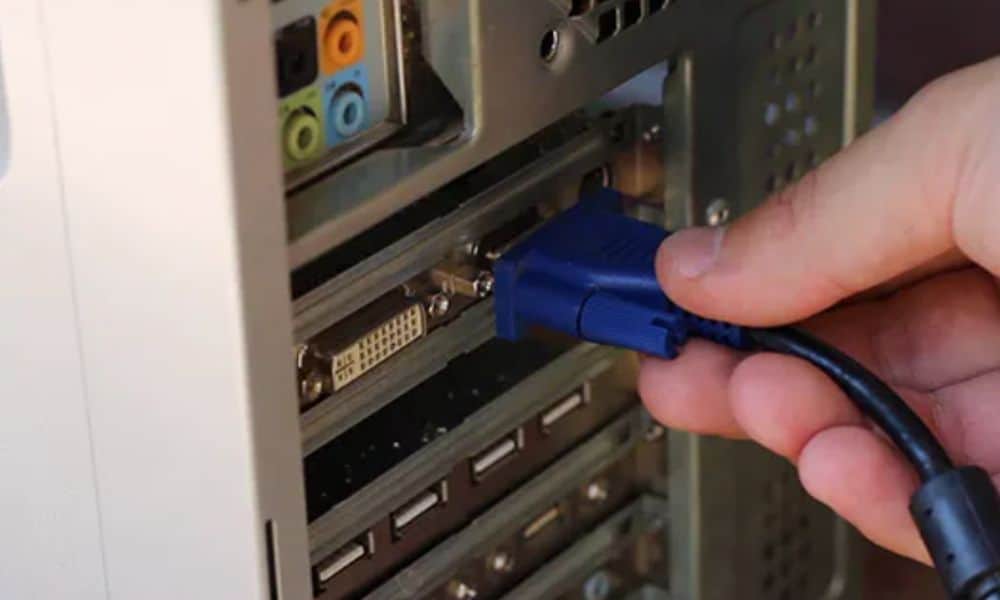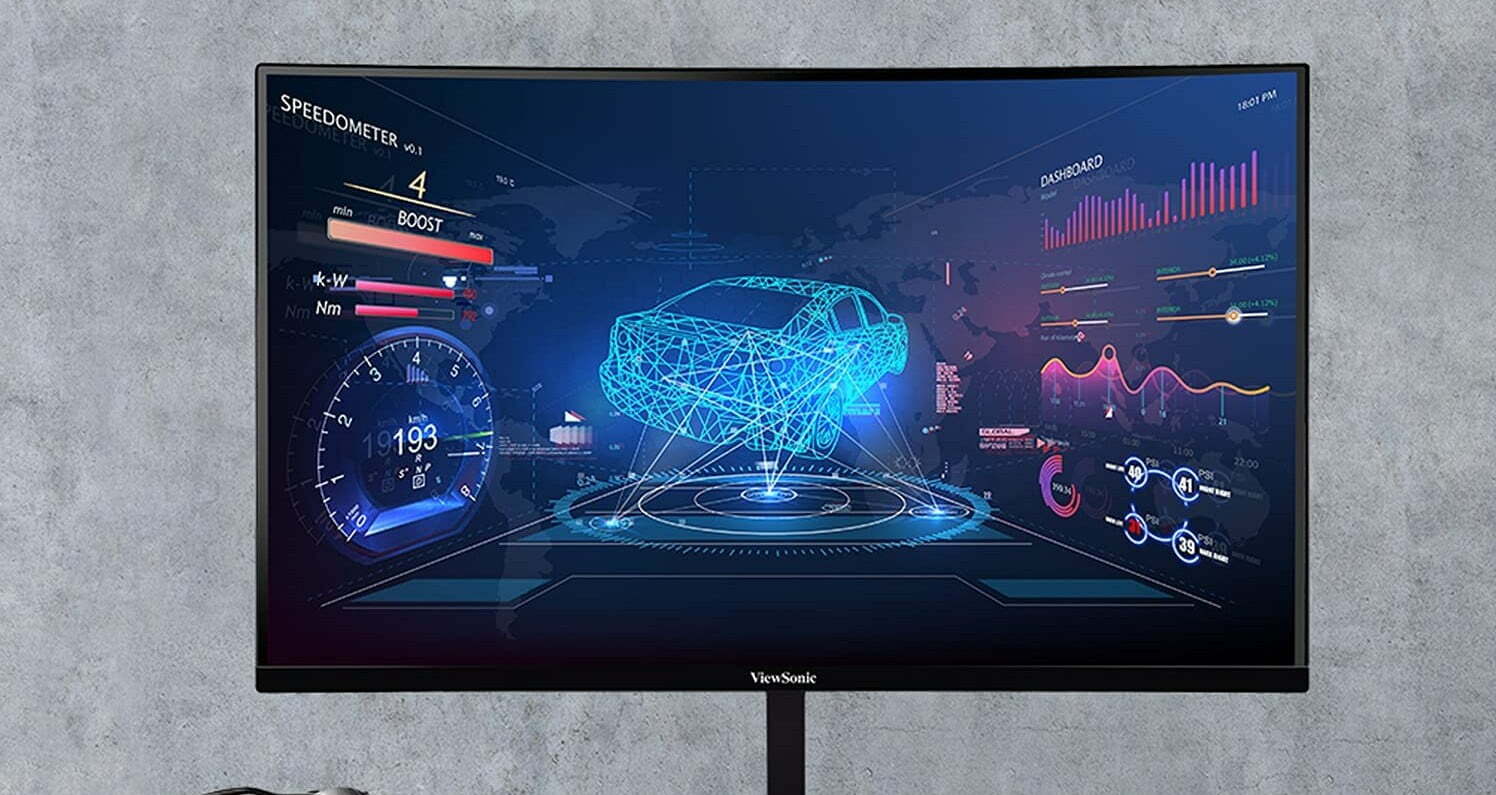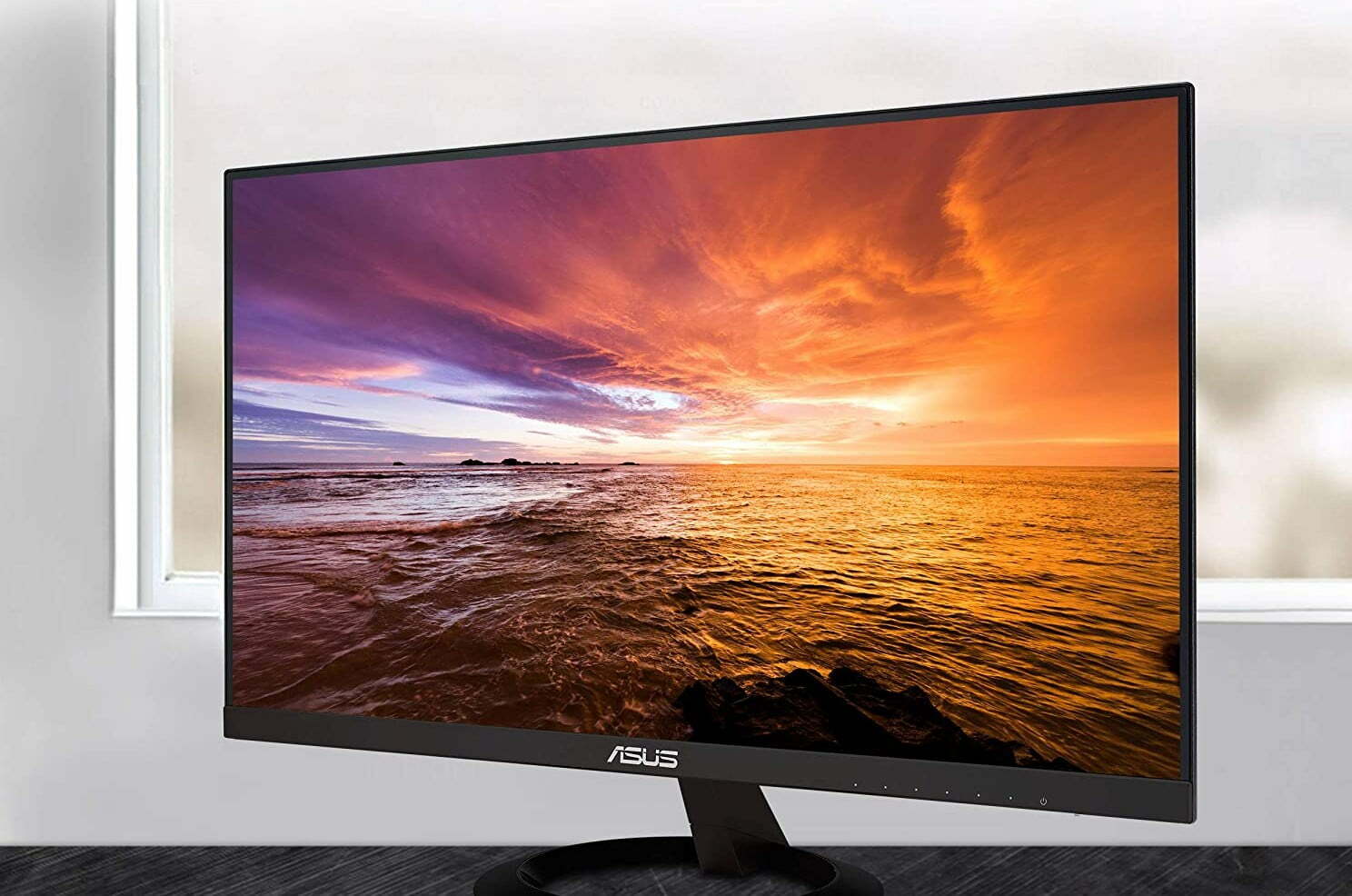Key Takeaway:
- VGA connections were created in 1987 by IBM.
- VGA only supports video display and cannot transmit audio
- VGA relies on analog signals and features limited display outputs
Connecting a top monitor to your computer, or even to your television is technically easy. But if you don’t know which ports to use, and how to properly connect them, the process can be frustrating. Especially as HDMI continues to be the primary connection port, many people aren’t as familiar with VGA cables or ports. Find out more about VGA connectors and cables, and when you need to use them.
A Holdover From a Long Time Ago
The easiest way to describe VGA is that it’s a legacy connection that’s usually found on older monitors or televisions. Short for Video Graphics Adapter, VGA ports were first developed by IBM in 1987. The port was specifically designed to support IBM’s PS/2 PC series. In particular, it was perfect for analog connections with the classic cathode ray tube (CRT) monitors. Note though, that sometimes VGA is referred to as SVGA today.
Tip: sometimes VGA is referred to as SVGA today
Drawbacks of VGA Connections
Although the brand standard for quite a while, VGA connections weren’t without problems. One of the biggest issues was that these connectors weren’t designed to be “hot-pluggable”. In short, this means that you can’t connect or disconnect a VGA cable while you’re using a monitor.
Warning: these connectors weren’t designed to be “hot-pluggable”
Doing so could potentially damage the pins or even encourage surges that could damage your computer’s hardware. Additionally, these connections don’t support audio. So, you would also need to connect external speakers.
Warning: these connections don’t support audio.
Related Posts:
Why VGA Fell Out of Favor
When CRT monitors were the only option, VGA was the brand standard because of its analog support. But because it relies on an analog signal, it has limited display outputs. The resolution can only offer up to 640 by 480. Additionally, it has slower refresh rates at just 60 hertz with 16 colors being displayed at a time.
As technology improved and flat-screen monitors based on LED and LCD technology became more common, people began to abandon VGA in favor of better options such as HDMI, DVI, and DisplayPort. Even though VGA is no longer the preferred choice for display connections, these connections are still found on flatscreen televisions and monitors.
Tip: Even though VGA is no longer the preferred choice for display connections, these connections are still found on flatscreen televisions and monitors
What do VGA Ports Look Like?
If you’ve ever seen a trapezoidal style blue port with 15 pinholes and two screw openings on either side, that’s a VGA port. Likewise, VGA cables feature the same trapezoid and pen design with screws to secure it to the monitor port.
Pins Explained
Each of the 15 pins on a VGA connector serves a purpose ranging from red, blue, and green video feed to grounding and sync for the horizontal and vertical visuals.
Related Posts:
Can I Still Use a VGA Connection?
This is going to depend on what you’re trying to connect through VGA. For example, while many monitors and televisions still feature a VGA connection, some video cards no longer include a VGA connection. In this case, you’re going to need an adapter or converter that can accept a VGA signal and convert it to DVI or HDMI.
Warning: some video cards no longer include a VGA connection
STAT:
VGA provides 640 x 480 resolution color display screens with a refresh rate of 60 Hz and 16 colors displayed at a time. If the resolution is lowered to 320 x 200, 256 colors are shown. (Computer Hope)
The VGA interface includes no affordances for hot-swapping, the ability to connect or disconnect the output device during operation, although in practice this can be done and usually does not cause damage to the hardware or other problems. The VESA DDC specification does however include a standard for hot-swapping. (Wikipedia)
Sources:
https://www.xenarc.com/different-types-of-monitor-ports.html
https://en.wikipedia.org/wiki/VGA_connector
https://www.computerhope.com/jargon/v/vga.htm
https://www.hp.com/us-en/shop/tech-takes/top-3-reasons-to-carry-hdmi-vga-adapter
https://airtame.com/vga-to-hdmi/




































![Best 27 Inch Computer Monitor in [year] 27 Best 27 Inch Computer Monitor in 2026](https://www.gadgetreview.dev/wp-content/uploads/how-to-buy-the-best-computer-monitor.jpg)
![Best BenQ Monitors in [year] 28 Best BenQ Monitors in 2026](https://www.gadgetreview.dev/wp-content/uploads/best-benq-monitor-image.jpg)
![Best ASUS Monitors in [year] 29 Best ASUS Monitors in 2026](https://www.gadgetreview.dev/wp-content/uploads/best-asus-monitor-image.jpg)
![Best Dell Monitors in [year] 30 Best Dell Monitors in 2026](https://www.gadgetreview.dev/wp-content/uploads/best-dell-monitor-image.jpg)
![Best HP Monitors in [year] 31 Best HP Monitors in 2026](https://www.gadgetreview.dev/wp-content/uploads/best-hp-monitor-image.jpg)
![Best Lenovo Monitors in [year] 32 Best Lenovo Monitors in 2026](https://www.gadgetreview.dev/wp-content/uploads/best-lenovo-monitor-image.jpg)
![Best ViewSonic Monitors in [year] 33 Best ViewSonic Monitors in 2026](https://www.gadgetreview.dev/wp-content/uploads/best-viewsonic-monitor-image.jpg)
![Best Gigabyte Monitors in [year] 34 Best Gigabyte Monitors in 2026](https://www.gadgetreview.dev/wp-content/uploads/best-gigabyte-monitor-image.jpg)
![Best Monitors for PS4 Pro Gaming in [year] 35 Best Monitors for PS4 Pro Gaming in 2026](https://www.gadgetreview.dev/wp-content/uploads/best-monitors-for-ps4-pro-image.jpg)
![Best Monitor for Xbox Series X in [year] 36 Best Monitor for Xbox Series X in 2026](https://www.gadgetreview.dev/wp-content/uploads/best-monitor-for-xbox-series-x-image.jpg)
![Best Acer Monitors in [year] 37 Best Acer Monitors in 2026](https://www.gadgetreview.dev/wp-content/uploads/best-acer-monitor-image.jpg)
![Best MSI Monitors in [year] 38 Best MSI Monitors in 2026](https://www.gadgetreview.dev/wp-content/uploads/best-msi-monitor-image.jpg)
![Best SAMSUNG Monitors in [year] 39 Best SAMSUNG Monitors in 2026](https://www.gadgetreview.dev/wp-content/uploads/best-samsung-monitor-image.jpg)
![Best LG Monitors in [year] 40 Best LG Monitors in 2026](https://www.gadgetreview.dev/wp-content/uploads/best-lg-monitor-image.jpg)
![Best AOC Monitors in [year] 41 Best AOC Monitors in 2026](https://www.gadgetreview.dev/wp-content/uploads/best-aoc-monitor-image.jpg)
![Best Philips Monitors in [year] 42 Best Philips Monitors in 2026](https://www.gadgetreview.dev/wp-content/uploads/best-philips-monitors-image.jpg)
![Best Monitors For PUBG in [year] 43 Best Monitors For PUBG in 2026](https://www.gadgetreview.dev/wp-content/uploads/best-monitor-for-pubg-image.jpg)
![Best Stream Decks in [year] 44 Best Stream Decks in 2026](https://www.gadgetreview.dev/wp-content/uploads/best-stream-deck-image.jpg)
![Best Monitors for Streaming in [year] 45 Best Monitors for Streaming in 2026](https://www.gadgetreview.dev/wp-content/uploads/best-monitor-for-streaming-image.jpg)
![Best Monitors For Flight Simulator in [year] 46 Best Monitors For Flight Simulator in 2026](https://www.gadgetreview.dev/wp-content/uploads/best-monitor-for-flight-simulator-image.jpg)




















